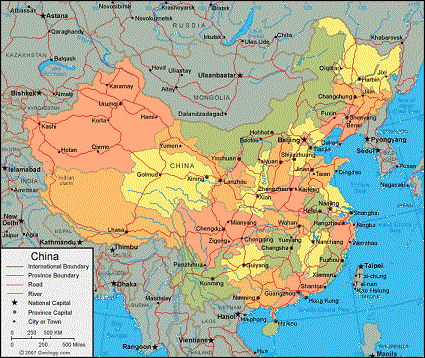China: Understanding the dragon
November 22, 2017 | Expert Insights
In contemporary geopolitics, it’s important for governments, especially India to understand the growing influence wielded by China.
At the Synergia Conclave – Security 360, a three-day conference organized by Synergia Foundation, a panel of experts provided their key insights on China and Indo-Sino relations.
Background
India’s contemporary relationship with China began in 1950. Between 1960 and 1987, India and China have been involved in three major military conflicts. A bilateral relationship has since been established but both nations have often been pitted against one another as they are two of the fastest growing economies in the world. The two countries have never completely resolved their border problems and Chinese troops have reportedly infringed upon the Indian Territory over the years.
In June 2017, a skirmish broke out between Indian and Chinese troops at the Doklam plateau. Indian soldiers had intervened in construction work being conducted by China in the region. The area is a disputed territory between Bhutan (an Indian ally) and China. Following the fights, both sides have increased their military presence in the region. India argued that China’s actions in Doklam posed a security threat for the nation.
China had called on India to withdraw its troops but the latter did not acquiesce. India, for its part has said that Chinese actions in the plateau is a direct security concern. In August 2017 after weeks of stand-off, the impasse was called off. The Indian government has withdrawn its troops and for now, China has withdrawn its road construction equipment and bulldozers. However, there is a discrepancy in the statements that both countries issued. The Indian side has announced that this decision was taken after an agreement of mutual disengagement of troops. China, on the other hand, has parlayed this as a victory for its region by announcing that India had agreed to withdraw the troops. The nation added that it will be continuing border patrols in the region.

Analysis
At the Synergia Conclave – Security 360, a three-day conference organized by Synergia Foundation, a panel of experts provided their key insights on China and Indo-Sino relations.
The panel of speakers at the ‘Understanding the Dragon’ session delved extensively into the entire range of issues connected to the Indo-China border relations, which have recently escalated, post-Doklam stand-off. Vishnu Som, Defence Editor and Principal Anchor with NDTV, spoke extensively on the extent of border incursion, with sequential data and images to illustrate that by all accounts, China seems to have specific intents that are slowly, but steadily being carried out. He enumerated on the maritime capacity development, China has been engaging with over the past years. Which, compared to the maritime investments towards being armed, India is comparatively behind in pace. He pointed out that often in India, it was the burden of our democratic processes and difficulties in sanctioning budgets that stood in the way of advancements in empowering the armed forces.
The opinions expressed by the distinguished participants from the armed forces, however, gave another angle to the whole issue. Vice Admiral Anil Chopra observed that China could never get to the level of maritime expertise and capability in real warfare as India would, basically ‘geography is destiny’ he said, pointing out that the geography of China does not lend itself to being a great maritime power. Maritime conflict very quickly becomes a global conflict, much quicker than land conflict, and therefore real-time aggression as envisioned now is unlikely to be the reality.
Air Chief Marshal Fali Homi Major, PVSM, AVSM, SC, VM, ADC; Former Member of NSAB, Government of India - spoke on how India being seen as a victim nation is how we have constructed it to be. Any aggression in the region would immediately affect all the regions around, and therefore this very term Two Front War is inadequate. If a conflict erupts in this part of the world, it would be ‘mini world war’ and all of the countries in the world would be affected and would, therefore, be involved.
Lieutenant General S.L. Narasimhan pointed out that the reorganization happening within the security structures in China needs to be observed and watched to discover what is the real agenda behind such an action. He enumerated on the timeline of China’s intention – and surmised that the actions we witness now, have the idea and processes initiated some time ago.
Assessment
Our assessment is that, China has transformed itself from a closed-off Asian nation mired in poverty to an emerging superpower that rivals the United States. Now, the tentacles of Chinese influence are gradually wrapping themselves around the world, upending roles and relationships that have dominated the global order for half a century. The latest is China’s evolution as a global power and a grand plan for the world economy that draws on the millennia-old tradition of the Silk Road trading route. China is changing communities and lives across the globe – with its financial clout and its influence on culture, education, travel and the military balance of power.








Comments